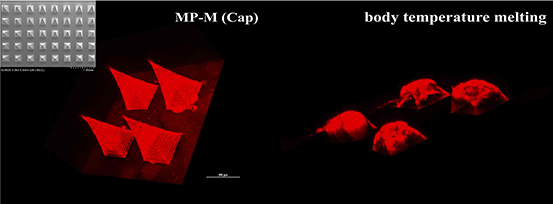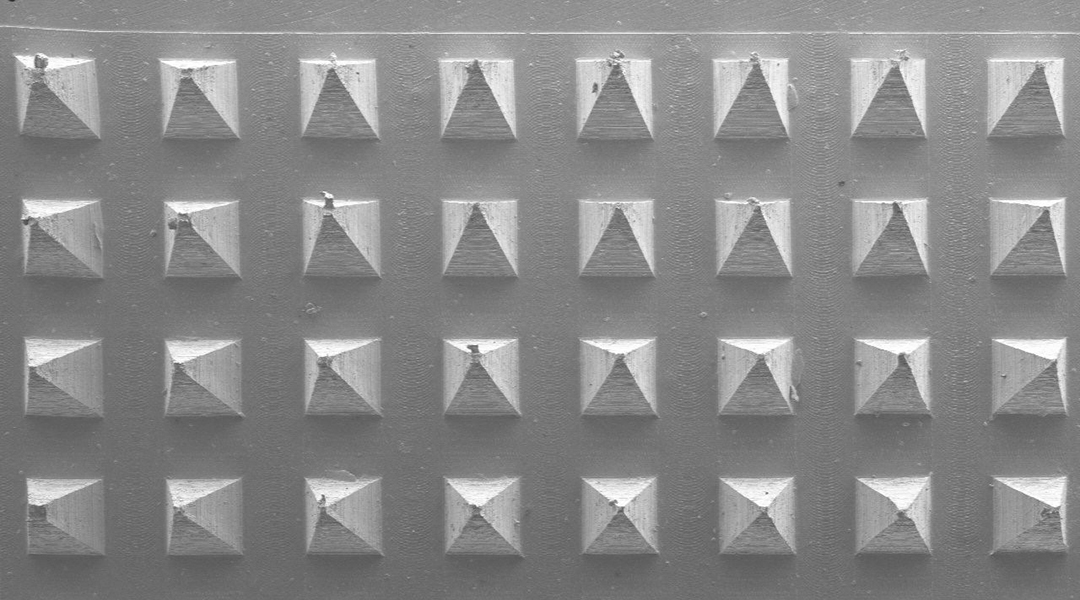SEM image of microneedle array
Encapsulated in alpha-lactalbumin nanomicelles, capsaicin deposited subcutaneously at the site of adipose tissues via microneedle patches has shown potential in promoting weight loss.
Obesity is a risk factor for a range of health problems including type 2 diabetes, heart disease, sleep disorders, and more. Given its incidence is rising globally, there is a need for more effective treatments to control weight gain beyond exercise and diet.
A hydrophobic natural compound called capsaicin is proven to be effective in inhibiting adipogenesis — the formation of fat cells from stem cells — with few adverse side effects. It is, however, poorly absorbed when administered orally and can also cause irritation to the lining of the gastrointestinal tract. Fat-soluble drugs, like capsaicin, are more readily taken up when delivered into adipose tissues directly.
By combining microneedle patches and nanomicelle encapsulation, researchers demonstrated encouraging anti-obesity effects, including suppression of cellular fat generation in adipocytes and conversion of white adipose tissue to brown. Brown fat — also known as “good fat” — counteracts obesity by speeding up the depletion of fat stores and burning calories to regulate body temperature.
As published in Advanced Functional Materials, capsaicin-loaded microneedle patches promote weight loss and reduction in body fat in animal models of diet-induced obesity. These physical changes were associated with a suppression of lipogenesis in targeted adipose tissues.
In an adipocyte cell line, the researcher team found that encapsulated capsaicin reduced accumulation of lipid droplets by regulating adipogenesis and also enhanced production of mitochondria — the energy powerhouses of cells.
They chose alpha-lactalbumin nanomicelles as a vehicle to transport capsaicin via microneedles for its ease of use as well as its own well-known weight control effects.
“Alpha-lactalbumin is more biocompatible and biodegradable than synthetic polymers. It self-assembles into nanomicelles, and capsaicin can be loaded in the hydrophobic core, which reduces irritation to the skin,” says team lead, Professor Yuan Li of China Agricultural University.
“The microneedles based on hyaluronic acid will then melt at body temperature under the skin. The nanomicelles efficiently permeate into subcutaneous fat and are endocytosed by adipocytes. At this point, the capsaicin is released inside the cells and acts synergistically with the dissociated alpha-lactalbumin peptides from the nanomicelles to reduce lipid deposition.”

Delivery of capsaicin via this method induced weight loss more efficiently than by administration via subcutaneous injection.
This pain-free, localized treatment allows self-application in the home and the authors believe that it has significant advantages over current treatments available such as liposuction, gastric surgery, and existing weight loss medications taken orally.
Reference: Cheng Bao, et al., Microneedle Patch Delivery of Capsaicin-Containing a-Lactalbumin Nanomicelles to Adipocytes Achieves Potent Anti-Obesity Effects, Advanced Functional Materials (2021). DOI: 10.1002/adfm.202011130

















